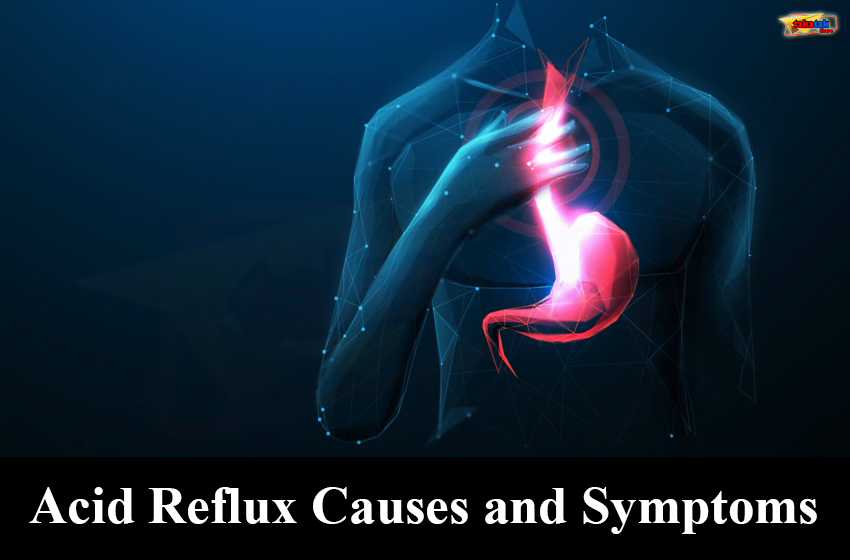The Best and Worst Foods for Acid Reflux: A burning sensation in the chest and a unpleasant taste that lingers in your throat gassy stomach bloating acid reflux isn’t a picnic. The food you consume will influence your symptoms. The most and least nutritious foods to treat acid reflux could be the different between relief from sweets and bitter suffering.
Table of contents
What is Acid Reflux
Acid reflux, also known as gastroesophageal reflux (GER) or gastroesophageal reflux disease (GERD), is a common condition where stomach acid flows back up into the esophagus. The esophagus is the tube that carries The Best and Worst Foods for Acid Reflux from your mouth to your stomach. Normally, a ring of muscle at the bottom of the esophagus, called the lower esophageal sphincter (LES), prevents acid from flowing upward into the esophagus. However, if the LES relaxes abnormally or weakens, stomach acid can travel upward, causing symptoms such as heartburn, regurgitation of food or sour liquid, chest pain, difficulty swallowing, and coughing.
Factors that can contribute to acid reflux include certain foods and drinks (such as spicy foods, fatty foods, citrus fruits, and alcohol), obesity, pregnancy, smoking, medications (like certain asthma medications, calcium channel blockers, and antihistamines), and certain medical conditions (like hiatal hernia and gastroparesis).
Treatment options may include lifestyle changes (such as avoiding trigger foods, losing weight, and elevating the head of the bed), medications (such as antacids, H2-receptor blockers, and proton pump inhibitors), and in severe cases, surgery to strengthen the LES. It’s important to see a doctor if you frequently experience symptoms of acid reflux to prevent complications like esophagitis, Barrett’s esophagus, or esophageal cancer.
Best Foods for Acid Reflux (Heartburn)
“A diet balanced with vegetables, protein and fruits is best. The best diets for acid reflux include:
- Breast of chicken Make sure to get rid of the fatty skin. Do not fry and instead opt for baked, broiled, or grill.
- Lettuce and celery as well as sweet peppersThese mild green vegetables are gentle on the stomach and won’t cause any painful gastric upset.
- brown rice – This complex carbohydrate is light and filling. Just make sure you don’t cook it.
- Melons Watermelon, cantaloupe and honeydew are low-acid fruits which are among the top food items for acid reflux.
- Oatmeal It’s filling and nutritious Breakfast that is comforting and healthy can also be used for lunch.
- Fennel – This low-acid, crunchy vegetable has a slight flavor of licorice and a cooling effect.
- Ginger – Drink the tea without caffeine or chew on low sugar dried ginger to get a natural stomach and tamer.
Worst Foods for Acid Reflux (Heartburn)
In general, anything acidic, fat or caffeinated is best kept away from. The most harmful foods on the acid reflux include:
- Tea and coffee Caffeinated drinks are known to cause acid reflux. Opt for teas with no caffeine.
- Carbonated drinks Bubbles grow within your stomach, creating greater pressure and pain. Select regular water and decaf cold tea.
- Chocolate – This chocolate treat comes with three ingredients that can cause acid reflux issues: caffeine, fat and cocoa.
- Peppermint-Don’t take a chance with its popularity as a soothing ingredient for stomachs; it is an acid-reflux trigger.
- Orange and grapefruit The acidity and naturally occurring acids of these fruits ease the upper esophagus muscle and aggravates symptoms.
- Tomatoes Avoid marinara sauce and ketchup as well as tomato soup. They’re typically rich in acids.
- Alcohol-This is an effect that is double-whammy. Alcohol reduces the sphincter valve, but it also boosts the production of acid inside the stomach.
- Fried food items Fried foodsThese are among the most harmful foods to eat for reflux. Don’t eat onion rings, french fries and chicken fried — cook in the oven or on the grill at home in the oven.
- Nighttime snacks Avoid eating anything during the two hours prior to going to sleep. You can also consider eating four to five small meals throughout each day rather than having two to three big meals.
Click here to know more about Acid Reflux
Is sweet potato good for acid reflux
Sweet potatoes can be a good choice for individuals with acid reflux, as they are generally considered to be a low-acid and non-spicy food. Here’s why sweet potatoes might be beneficial for managing acid reflux:
- Low acidity: Sweet potatoes have a relatively low acidic content compared to some other foods, which can help reduce the risk of triggering acid reflux symptoms.
- Rich in vitamins and minerals: Sweet potatoes are packed with essential nutrients such as vitamins A and C, potassium, and fiber, which can contribute to overall digestive health.
- High fiber content: The fiber in sweet potatoes can aid in digestion and promote regular bowel movements, which may help alleviate symptoms of acid reflux.
- Alkaline-forming: Sweet potatoes have an alkaline-forming effect in the body, which can help neutralize stomach acid and reduce the risk of acid reflux.
- Versatility: Sweet potatoes can be prepared in various ways, including baking, roasting, steaming, or boiling, making them a versatile and tasty addition to a reflux-friendly diet.
Is soy milk good for acid reflux
Soy milk can be a suitable alternative to cow’s milk for individuals with acid reflux, especially if they are lactose intolerant or have a dairy allergy. Here are some points to consider regarding soy milk and its potential impact on acid reflux:
- Lower fat content: Soy milk typically has a lower fat content compared to whole cow’s milk. High-fat foods can contribute to the relaxation of the lower esophageal sphincter (LES), allowing stomach acid to reflux into the esophagus. Choosing lower-fat options may help reduce the risk of acid reflux symptoms.
- No lactose: Soy milk is lactose-free, making it a suitable option for individuals who are lactose intolerant. Consuming lactose-containing dairy products can sometimes trigger or worsen acid reflux symptoms in people with lactose intolerance.
- Potential allergen: While soy milk is a dairy-free alternative, it’s important to note that soy is a common allergen. Some individuals may have a soy allergy, which can cause adverse reactions, including gastrointestinal symptoms. If you suspect a soy allergy, it’s best to avoid soy milk and choose another non-dairy alternative, such as almond milk or oat milk.
- Moderation is key: Some people may find that certain ingredients or additives in commercial soy milk products can trigger reflux symptoms. Opting for unsweetened varieties without added flavors or preservatives may be preferable.
- Personalized approach: Acid reflux triggers can vary from person to person, so it’s essential to listen to your body and pay attention to how different foods and beverages affect your symptoms. Keeping a food diary can help identify potential triggers and make informed dietary choices.








